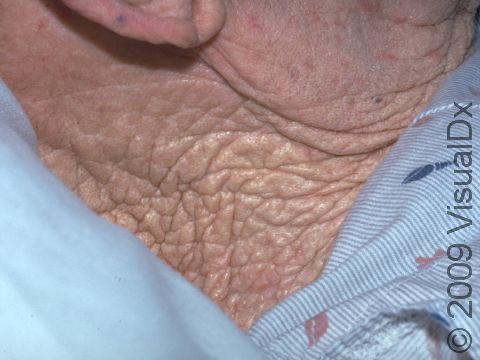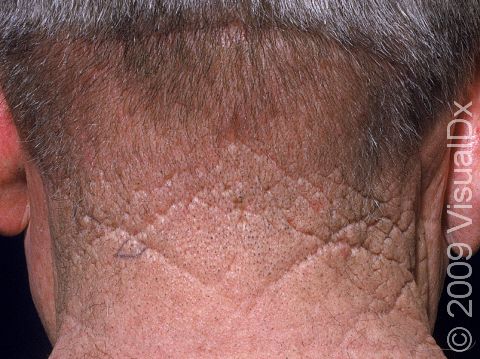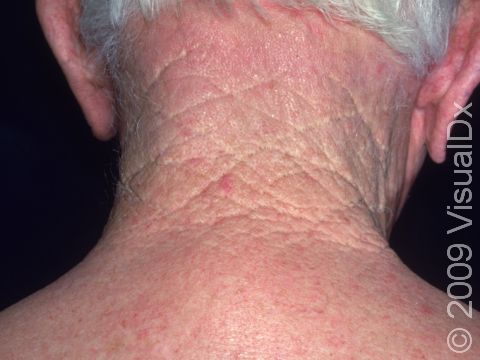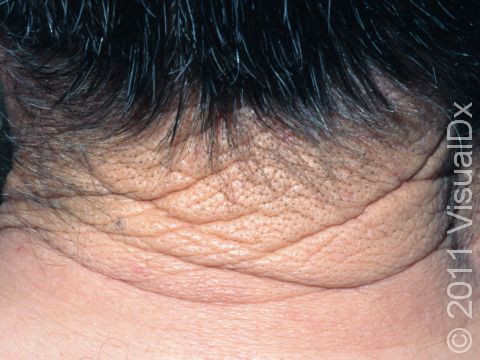Cutis Rhomboidalis Nuchae
Cutis rhomboidalis nuchae is caused by long-term, prolonged sun exposure and resultant damage to the skin on the back of the neck. The affected skin becomes thick, leathery, and has deep lines in a geometric pattern. Once the skin changes of cutis rhomboidalis nuchae have occurred, they are difficult, if not impossible, to reverse.
Who's At Risk?
Cutis rhomboidalis nuchae primarily occurs in older individuals with lighter skin colors, particularly those with a history of prolonged sun exposure. Those who work outside are predisposed to cutis rhomboidalis nuchae.
Signs & Symptoms
Cutis rhomboidalis nuchae appears on the back of the neck as deep wrinkling and furrowing of the skin associated with a leathery texture.
Self-Care Guidelines
Ideally, prevent cutis rhomboidalis nuchae and other types of sun damage by avoiding sun exposure midday (10:00 AM to 3:00 PM), wearing sun-protective clothing (tightly woven clothes and hats), and applying a broad-spectrum sunscreen (meaning it blocks UVA and UVB rays) with sun protection factor (SPF) 30 or above.
Treatments
No treatment is needed for cutis rhomboidalis nuchae. However, there are treatment options available for cosmetic purposes, such as topical retinoids (eg, tretinoin cream or gel) or laser therapy.
Visit Urgency
Cutis rhomboidalis nuchae does not require medical care, but it is a sign of severe sun damage. Seeing a medical professional to look for other signs of skin damage, such as sun-induced skin cancers (eg, basal cell carcinoma, squamous cell carcinoma, melanoma), is recommended.
Trusted Links
References
Bolognia J, Schaffer JV, Cerroni L. Dermatology. 4th ed. Philadelphia, PA: Elsevier; 2018.
James WD, Elston D, Treat JR, Rosenbach MA. Andrew’s Diseases of the Skin. 13th ed. Philadelphia, PA: Elsevier; 2019.
Kang S, Amagai M, Bruckner AL, et al. Fitzpatrick’s Dermatology. 9th ed. New York, NY: McGraw-Hill Education; 2019.
Last modified on June 17th, 2024 at 11:14 am

Not sure what to look for?
Try our new Rash and Skin Condition Finder



